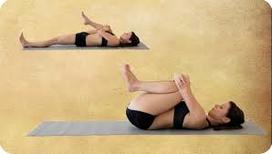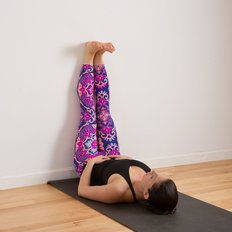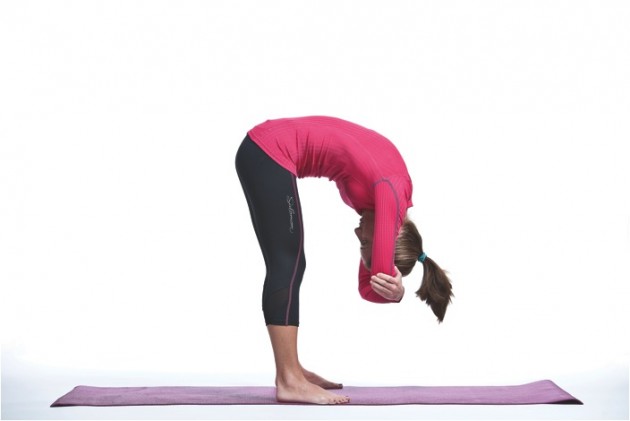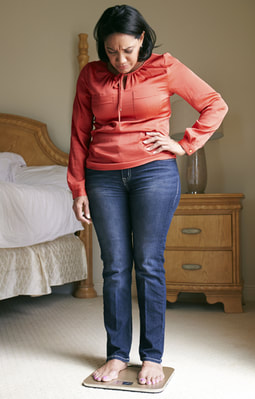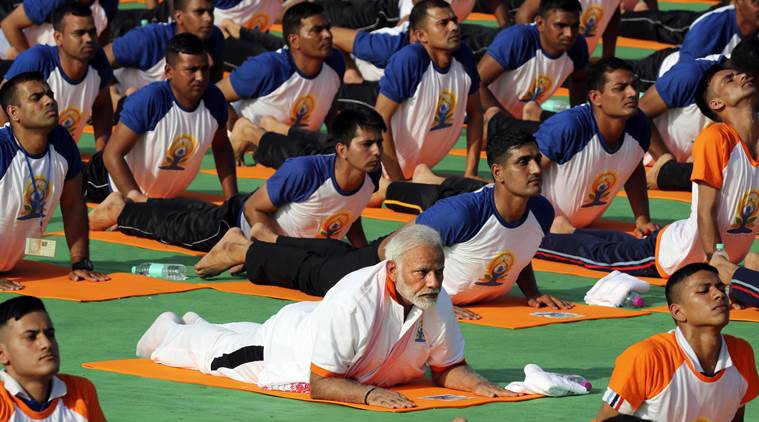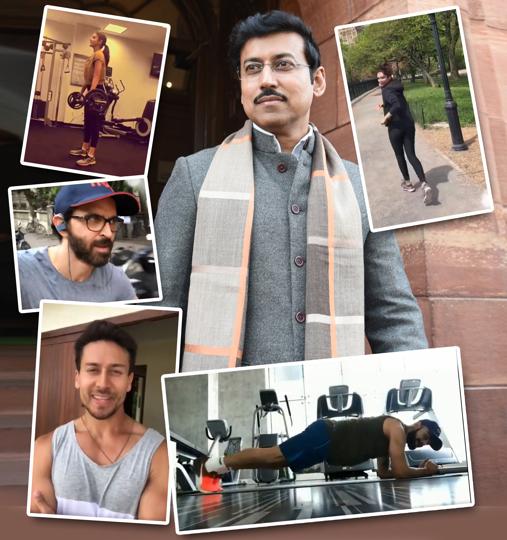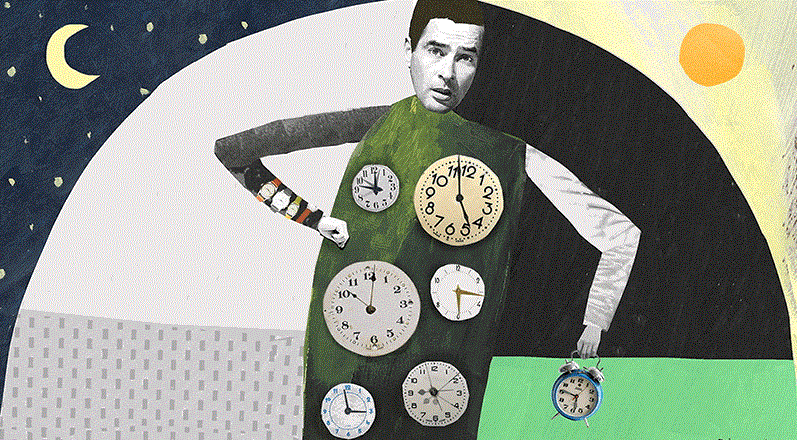|
Dedicating an hour or two for exercising alone every day is a dream for many individuals but this is neither an excuse to skip physical activity altogether nor grumble about your inability to engage yourself in workouts. Getting a solid 60-minutes to workout might be next to impossible but it is possible to find 10-15 minutes a couple of times in a day on at least 4-5 days in a week.
You need not spend hours together at the gym but stay fit with short workout sessions- anywhere between 15 and 30 minutes of workout is great for your body. Do planks, squats and tricep dips that work on several muscle groups simultaneously and yoga (this can provide cardiovascular and flexibility benefits when you involve yourself in power yoga or active movements such as sun salutation). Research studies too prove that short exercise durations are beneficial while short durations of high-intensity exercises improve blood pressure cholesterol and weight in people with Type 2 diabetes. Some simple tips that help you squeeze in even ten minutes of movement in a day include:
Just as your meeting schedules, set an alarm in your mobile or calendar to remind you of your exercise schedules. Only then will you be serious enough to workout and take it as a part of your everyday routine that can never be skipped on any basis. If you are interested in pursuing a healthy diet plan along with your workout plan, get in touch with a registered dietitian nutritionist at www.firsteatright.com. Summer is the season to show off your trendy wardrobe attire-sleeveless crop tops, mini skirts that reveal your toned legs and shorts that give you the sporty look gear up your entertainment quotient with family, friends or colleagues. Along with all the fun and frolic, you are attacked by an irritating skin problem, chafing, that might spoil your entire mood and offset your joy. Addressing Dressing Concerns Chafing is a very common skin problem mainly due to skin surfaces rubbing against each other (for example, obese people find their thighs often rubbing against each other), irritating fabric or moisture. Repetitive or continuous rubbing on the skin can end up in a rash, burn or even lead to swelling, bleeding or crusting. Thighs are the most commonly affected sites of chaffing while groin, nipples, feet, armpits or buttocks are also vulnerable ones. Skin is the largest organ in the human body which plays a critical role in safeguarding our body against outside factors such as germs, dust, heat and physical harm. Our skin needs to be neat, clean and dry to protect us and prevent chafing. Skin is like every other organ in the human body whose cells breaks up after reaching its maximum limit. Despite protecting ourselves from dust, heat and chemicals, what more factors prevail which can harm our skin and cause chafing? Excess Weight: Being overweight/obese increases the chances of skin-to-skin rubbing, especially very easy for your inner thighs to rub against each other. Reduce your weight and keep your body toned by meeting a registered dietitian nutritionist at www.firsteatright.com. Nursing Infants: Breastfeeding increases the chances of chafed nipples due to bras or pads Sports: Endurance sports such as biking or running are two of the most common sports activities that can cause chafing due to repeated movements, excess sweat or clothing. That’s because biking and running calls for speedy movement of our thighs either to pedal or run faster which creates enough chances for skin-to-skin rubbing. Clothing such as skirts: Wearing dresses such as skirts or saree that do not have a protective layer of clothing that prevents thighs from rubbing against each other can cause chafing in humid weather. Diapers: Babies usually suffer from chafing due to continuous use of diapers that can cause rashes. Urine or feces that are left for a prolonged period without removing the diaper can lead to chafing. This is also called as diaper rash. Ill-fitting Clothing: Wearing clothes that don’t fit properly on your body can rub repeatedly and irritate the skin. For example, your sleeves, bra straps or waistbands are some clothes that often irritate all of us sometime in life. Sweating: All of us sweat but some of us sweat badly. Dried sweat can leave a layer of salt on the skin that can irritate us and worsen chafing.  Compression Shorts Inside Skirts Prevents Friction while Playing Compression Shorts Inside Skirts Prevents Friction while Playing Lend A Helping Hand to End Friction Every problem has a solution. You cannot prevent sweating, stop feeding or end your sports practice to prevent chafing. All you can do is take preventive measures to safeguard yourself and decrease the severity/frequency:
Many of us voice out the case of President Obama when we speak about greying hair as his hair color turned dark brown to grey during his tenure as the President. But, one needs to also remember that he aged from 47 to 55 during this tenure, a time when many people’s hair turns grey. Though we introduce stress as the primary factor for change in hair color, the evidences are still inconclusive and it is only our strong gut feeling that supports stress.
Stress does not turn hair grey. In fact, hair does not turn grey at all! Hair follicles produce hair and once done, the color sets. If the color sets as brown, black, red or blond, it is never going to become gray. The logic is that hair follicles produce less color as we age. When hair goes through the repeated process of dying and re-growing, it is likelier that the color sets as gray after the age of 35. The age at which the color sets is determined by genetics too! Stress might not turn your hair grey, but it can cause a condition called telogen effluvium that makes the hair shed out at a 3-times higher pace than normal. While hair growth happens in some time safeguarding you from balding, it is possible that hair grows gray in color (due to less production of color as we age) instead of our natural brown, red or blond color when the person is above middle-age. History of Hair Color Surprisingly our hair is initially white in color and gets its natural color from a pigment called melanin whose formation happens even before we are born. The darkness and intensity of our hair color depends on the distribution of the melanin pigment in the middle layer of the hair shaft or cortex. Melanin is composed of specialized pigment cells called melanocytes which inject melanin into cells containing keratin (protein that makes our nails, hair and skin). This process keeps repeating through our years maintaining our hair color. As we age, the melanin production reduces and the hair turn grey/white finally. Certain other factors that contribute to hair pigmentation making it lighter or darker include hormones, genetic defects, body distribution, age, climate, pollutants, toxins and chemical exposure. Apart from these, some people have graying hair due to certain illnesses such as:
Any animation or superhero fan would have not missed the Incredibles 2 movie that was released this month. So, how was your experience? Nowadays, wishing for a theater experience is no joke as people are forced to spend hundreds or even thousands of rupees to enjoy the luxuries of plush seats, buttery popcorns, Dolby sound effect and of course the movie (hoping that it’s good!). After paying so much, how would you like to be affected by health problems instead of an enjoyable movie experience? The new Disney-Pixar movie contains scenes that have strobe lights flashing continuously for anywhere between a few seconds to a more than a minute which might seriously affect people with photosensitive epilepsy and cause seizures.
Warning Fans worldwide have posted warnings on their social media accounts cautioning people about the flashing light scenes. It would have been better if Disney could have released the movie with a warning tag on all its digital releases and social media channels. As a response to theatre-goers’ concerns, most theatres displayed notices warning audiences about the movie’s visual effects. Before these precautionary steps, an unlucky few experienced seizures while some of them sat through the movie either closing their eyes or simply wishing for it to end despite its remarkable plot and screenplay. Parents and all individuals alike have the right to make decisions of watching/not watching the movie based on warning notes. It is unfair to shock the audience in between the screening of the movie with such effects. It is mandatory that the movie should have carried the warning sign at the ticket window. Epilepsy Almost 50 million people living across the world suffer from epilepsy, a common neurological disease, according to the World Health Organization. A chronic disorder of the brain, it is characterized by repeated seizures involving a part of the body or the entire body. A seizure is a sudden increase in electrical activity in the brain which can change the way a person feels or behaves. This is only a symptom of a disease and not a disease by itself. For more details on epilepsy, please visit the website www.firsteatright.com. Photosensitive epilepsy is when people are affected by seizures due to flashing lights/interchanging light and dark patterns. Almost 1 in 100 people has epilepsy and of these individuals, 3% suffer from photosensitive epilepsy. It is mostly children and young people who suffer from this condition and it is less common among those aged 20 and above. This more strongly emphasizes on the need for a warning note about the strong flashing lights as Incredibles 2 is a movie loved more by children and young adults. Also, even people without epilepsy can be sensitive to such flashy strobe lights that can even cause migraine or headache. Photosensitive Epilepsy Most people can realize that they suffer from photosensitive epilepsy when they suffer from seizures on exposure to flashing lights or patterns. An EEG can also help to diagnose the disease. Here, a technician flashes lights at different speeds and looks for changes in brain activities. If there are clues of any deviations from normal activities, he/she stops the test before seizure strikes the patient. A simple light flash will not trigger a seizure and the rates should be anywhere between 3 and 30 hertz (flashes per second) to trigger one. But, these rates too vary from person to person-some people might be sensitive at frequencies up to 60 hertz but we mostly don’t find people going below the minimum frequency limit, that is below 3 hertz to experience a seizure. What Kind of Light Triggers A Seizure? Very strong lights, repeated flashing, flickering or patterned effects can make anyone feel uncomfortable, disoriented or unwell. Hence, we cannot conclude that all these people suffer from photosensitive epilepsy. Tiredness, stress or excitement increase the risk of photosensitive epilepsy. Playing video games continuously, sunlight through curtain blinds, structures that create repetitive patterns as you move past them (for example, escalators and railings), screens that constantly show flickering light, fireworks that can cause flashing images, cameras that have multiple flashes and strobe lights at parties or nightclubs enhance the risk of photosensitive epilepsy. It is always better to sit far away from TV screens, avoid playing video games continuously and take breaks from the screen to reduce the risk of photosensitive epilepsy. It is necessary to note that this is not the first time that children-content videos contained potential threat to cause seizures. In 1997, one of the episodes of ‘Pokemon’ aired with flashing lights sent almost 700 children who were suffering from nausea, vomiting, convulsions and headaches to hospitals. Whatever it is, if you are a superhero fan who is not troubled by any of the things mentioned above, you can surely watch the movie which even has Bollywood actress Kajol lending her voice for Elasticgirl, the superhero mum. Carrying your weight is the greatest burden above all! Apart from being the greatest cause for all kinds of diseases and disorders your excess weight tags along with you, rules your body, your self-image and reflects your overall social outlook.
Stroke is one disease that can strike a person hard without any indication, but there are many things that you can do to lower your chances of having a stroke. Even if you have suffered from stroke once, you can take preventive steps to avoid another great mishap. Healthy body weight plays a major role in preventing stroke. Hence, controlling your weight helps to lower the chances of a stroke risk. We strike for extra money, happiness and time off our daily strenuous routine and don’t get enough of any of these. But, we acquire extra kilograms easily that adds extra strain on the entire circulatory system leading to unwanted health conditions such as high blood pressure, diabetes, high cholesterol and obstructive sleep apnea. One good thing is that, even losing 5-10% of your excess body weight can help reduce blood pressure and stroke-causing factors. Starving or eating minimal food is not the way to weight loss. Keep off the excess calories by following these tips: Physical Activity: Exercise must be a mandatory part of your daily routine and a sure-shot way to burn off calories. Apart from dedicating a specific time for exercising, you can include movements in your daily activities such as walking from your cubicle to your colleague’s cubicle to discuss an issue, pacing while talking over the phone or climbing the stairs instead of using the elevator. Find more tips on adding movements to your daily routine at www.firsteatright.com. Avoid sipping calories: It is not just the foods you eat but the drinks you consume too that can add unnecessary calories to your body. Sports drinks, sodas, energy drinks and even your fruit juices are calorie-laden. The worst thing about sugary drinks is that, your body does not account for it in the way it accounts for solid foods and you keep on drinking them until your body indicates that it is over-full. Try switching over to unsweetened coffee or tea, sparkling plain water with some fresh mint or a few raspberries. Include unprocessed foods: Eating more whole foods such as fruits, vegetables and whole grains helps to keep you full for longer time periods as it takes more than usual time to digest. Whole foods are also rich in nutrients such as vitamins, minerals and fiber and are low in salt (better for blood pressure too). Snack healthily: People mostly snack unmindfully despite having control over their meal portions and nutrients. Such people also tend to skip their meals to compensate for the excess calories that get loaded due to their snacking policy. Instead of skipping meals or snacks, individuals can replace unhealthy snacking options with healthier ones such as carrot sticks, unsweetened yogurt with fruits and air-popped popcorn (replace butter with seasoned herbs for flavor). The world is filled with followers than leaders. An article on the harmful effects of eating red meat gets published and people worldwide start speaking about it. Few celebrities and leaders adopt a plant-based diet quoting a list of benefits and the common man wants to adopt the same! Some of these are extremely useful and beneficial while some others are a waste of expenses and time. For instance, the latest news on ‘pink slime’ which is a meat by-product used as a food additive to ground beef will make any meat lover to think twice before eating meat or beef again. Repeated negative news on animal-based products depicted in movies, swine flu mania or the pink slime limelight encourages more number of people to switch over to a plant-based diet. True, there are advantages of taking up a plant-based diet but there are certain disadvantages too. Pursuing any new eating routine, exercises or lifestyle changes which is basically healthy can be unhealthy if it is practiced in the wrong way. Listed here are some of the common errors people commit while switching over to a plant-based diet. Ensure to avoid them and reap total benefits: Improperly Balanced Plate: Adopting a plant-based diet means staying off from all animal products including lean meat and dairy products such as milk, yogurt and curd. All these foods disappear from the kitchen cabinets in no time! So how are you going to compensate for these missing nutrients? French fries and cutlets are technically vegan, but not the kind of foods one expects on his/her plate. The aim is to fill your plate with healthy foods that are not animal-based and also ensure that you do not simply stuff the plate with high-calorie, zero-nutrient foods that are plant-based. Incorporate sufficient quantities of fruits, vegetables, whole grains and legumes in your daily diet. Swap your beef for mushrooms to gain a dash of nutrients such as protein, fiber and antioxidants without all the saturated fat and cholesterol. Reduced Calorie Intake: An animal-based diet on any day is calorie-rich than a plant-based diet. Hence, while switching over you need to ensure to maintain the number of calories that you consume too. But, its just not about the quantity of food but also about the quality of the calories you consume. Focus on nutrient-dense foods and there are chances for you to feel lethargic or experience rapid weight loss initially. Compensate for these by eating more of nuts, grains and seeds that are high in calories. Procuring Proteins is Never-ending: There is a widespread myth that only an animal-based diet can satisfy our daily protein requirements and eating a plant-based diet leaves you with insufficient proteins. It is possible to get your daily share of required macronutrients on your properly structured plant-based diet. For example, a serving of tomato or onion contains 25% protein, quinoa contains 18% and beans up to 27%. Dark leafy greens contain 35-50% proteins. Replace roasted turkey and chicken with simple edamame, chick pea and sunflower seeds in your salad to satisfy your protein needs in the healthiest way.  Feel Good Thinking About the Foods You Can Eat Feel Good Thinking About the Foods You Can Eat Avoiding Seasonal Produce: Eating the fruits and vegetables available during the season makes you amass total nutrient benefits from the produce and also enjoy fresh ones that taste great. It also ensures supple quantity of vitamins and minerals in your diet. Eating oranges in February provides you with vitamin C and potassium and consuming Brussels sprout in August provides vitamin A and folate. New foods, especially veggies or fruits, baffle some people but start small trying one new produce per week. Anxiousness About Ignoring Certain Foods: While you brand yourself as a vegetarian, flexitarian, vegan or pescatarian, you start building up pressure within yourself. Any food that you eat must be relished and enjoyed. When you give up certain foods and move towards another diet, explore all the food options that remain open here instead of worrying about all the ones that you omitted. Having no ‘forbidden’ food in your list makes you feel comfortable and a lot safer. Approaching any diet with the mindset of abundance rather than deprivation is the best way to keep yourself healthy as you fill your plate with all the required nutrients for a healthy lifestyle. Lack of Supplements: Avoiding an animal-based diet necessitates using B12 supplementation. Another nutrient that most people lack irrespective of the diet they follow is vitamin D as sunshine is the primary source of this nutrient. Meet a registered dietitian nutritionist at www.firsteatright.com to check out your requirements for supplements before taking one by yourself. You can also get a personalized diet plan chalked out by your RDN to ensure that switching over from your animal-based diet to a plant-based one is smooth and enriching to your health and lifestyle. The 8-hour sleep routine, going to bed by 10 in the night or sleeping without the smartphone by your side table have become unimaginable or almost impossible. Stress, anxiety and sleeplessness can be blamed only to a certain extent to disturbed sleep quality and there are many more health connections beyond these that can affect our sleep. Even medications that we take for these health issues can hinder our peaceful sleep routines. Given here are some common conditions that can affect our everyday sleep routine badly:
Allergies: Allergies can ruin a person’s sleep time badly due to intermittent coughing, sneezing, congestion and itchy/watery eyes that can cause poor sleep quality due to frequent sleepless nights. Mild obstructive sleep apnea (pauses in breathing) can worsen things as the person starts breathing through his/her mouth causing inconvenience to him/her. Also, allergic medication can prevent a person from sleeping while certain other medications can leave the person feeling drowsy unable to focus on work the next day. Asthma: More than 60% of people with asthma face coughing, breathing and wheezing problems that interrupt sleep. Asthma-related drugs can cause sleep problems and frequent sleeplessness during the night and so do inhaler drugs that individuals commonly use for relief. Alzheimer’s disease: Alzheimer’s is one grave disease troubling the affected person and the people surrounding them. More often, Alzheimer’s leads to insomnia and daytime sleeping that are predominantly present during the later stages of the disease. Slightly adjusting daytime schedules along with medications (if needed) can elevate sleep quality. Knowing what not to do when you have an individual with Alzheimer's at home is more important than knowing what to do! Get the complete do's and don'ts list from the website www.firsteatright.com. Chronic obstructive pulmonary disease (COPD): Lung disorders such as emphysema, chronic bronchitis and asthma can make a person suffer from coughing, chest pain and breathing difficulty that again hinders sleep quality. Also, 15% of people with COPD suffer from sleep apnea and certain medications used for COPD can cause sleep problems. Benign prostatic hyperplasia: Men above the age of 60 often have an enlarged prostate gland which compels them to get up to use the bathroom two or more times each night. Medications can help these men often. Congestive heart failure: This disease reduces the heart’s ability to pump blood along with increasing the risk of sleep apnea and periodic shaking of the arms and legs called periodic limb movements. Treating the heart failure can help along with options for minimizing sleep apnea. Depression/stress/anxiety: All of us have our ups and downs in life with certain sleepless nights due to periodic bad days at work, personal life or health. But, when these sleepless nights continue it could be the work of depression or anxiety playing it’s part. Attending counselling sessions to minimize stress or depression and treating sleep problems can elevate mental health too. Diabetes: Increased blood glucose levels might make you get up frequently during the night to use the bathroom. Also, diabetes people are often overweight which again raises their chances of sleep apnea. Frequent changes in blood sugar levels can cause night sweats or pain due to damaged nerves that can once again hinder sleep quality. Gastroesophageal reflux: Research proves that 3 of 4 people with heartburn experience it during the night at least once a week as lying down proliferates painful backwash of stomach acid into the esophagus. This can be often curbed by staying away from a heavy dinner or consuming alcohol and also by raising the head of your bed by about six inches. Parkinson’s disease: The effects of this disease are worse on sleep quality. People experience nightmares, insomnia, may act out dreams while sleeping, sleep apnea or might fall asleep without warning during the day. Although medications are helpful, certain Parkinson’s-related drugs cause insomnia and it is advisable to take them earlier during the day. Perimenopause: Almost 50% of women between 40 and 64 years of age report sleep problems as estrogen level discrepancies can cause hot flashes, night sweats or getting up during the night. Taking as much precautions as possible, such as avoiding caffeine late in the evening, getting exposed to sunlight during the day, doing exercise, relaxing before bedtime or keeping yourself cool can help to a great extent. Hippocrates quotes that ‘Bad digestion is the root of all evil.’ Ever realized that the mind and the gut are strongly connected? Too much stress, butterfly effects in the stomach, too depressed to eat, repeated bathroom visits before heading out or hesitating to ‘go’ under new circumstances proves this! We even call the GI tract as the ‘second brain’ as the tract lining contains millions of nerve cells that convey minute-by-minute feedback on thoughts, emotions and the body’s overall well-being. It is not surprising that gastrointestinal diseases such as irritable bowel syndrome, Crohn’s disease or ulcerative colitis are commonly found to occur along with psychological disorders such as anxiety and depression. Yoga for the Dual Effect Yoga is a group of mental, physical and spiritual practices that serve beneficial in several ways. Yoga can serve to keep both, the mind and body active thereby helping in providing digestive relief too. The yoga asanas or postures trigger blood flow, massages digestive organs and relieves gas. Pranayama (breathing exercise) and meditation is a great stress buster and heightens an individual’s awareness of stress sources in his/her life for chronic management. There are different yoga practices and various meditation techniques each contributing towards better health in possible ways. Assuming the digestive system as a juicer, digestive enzymes as juicer blades, body toxins as fruit waste and energy as juice, if any of the juicer parts don’t do their work properly, then the entire juicing process collapses. If the juicer blades (enzymes) don’t spin as expected, the juicer produces less juice and there is ample toxin (fruit waste) accumulation in the cells. A supple digestive system is driven by proper digestive enzymes. Yoga helps to make these enzymes do their work properly and helps improve digestion:
Meditation Sit down (if possible) on a cushion or blanket placing your hands on your knees or in your lap and sit straight (but not rigid). Close your eye and breathe normally. Observe your breathing pattern whether it is shallow or long, whether there is easy flow of air through your nose into your lungs and into the abdomen or are your abdominal muscles tense? Examine your body from head to toe searching for tension areas in the body and relieving stress by sending breath to those areas. Stress creates equal havoc just like other disorders to the body, details of which are available at www.firsteatright.com. 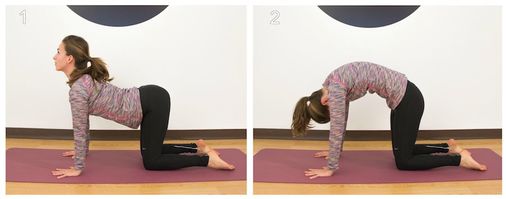 Inhale to Cow Pose & Exhale to Cat Pose Inhale to Cow Pose & Exhale to Cat Pose Yoga Poses Cat Cow: Go on a table-top position using your hands and knees. Keep your elbow and wrists under the shoulders and knees directly under the hips. Inhale to cow pose. bend your head to the ceiling and sway back so that your belly drops to the ground and the sitting bones tilt up to the ceiling. Exhale to cat pose by looking down at the ground. Alter between these two poses in sync with your own breath. 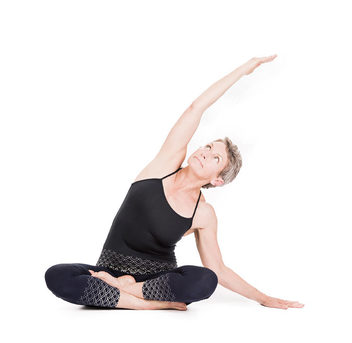 Sitting Cross-legged Works Great for Health Sitting Cross-legged Works Great for Health Seated side bend: Sit crossed leg and bend such that the crown of your head reaches up toward the ceiling. Maintain relaxed shoulders, keep one arm up toward the ceiling and the other on the ground in your side. Bend the raised arm and keep it pointing towards the direction of the arm placed on the ground. Press the hip bone on the same side as your raised arm into the ground. Revolved triangle: Standing up, stretch one leg back about a leg’s length. Hip bones must face forward, fold over the front leg and keep your back leg flat and leveled. Some people find it useful to keep a stack of books to rest their hands as this helps to keep the legs and back straight and hips aligned. Place the hand opposite to the front leg on the ground besides the stretched front leg and stretch the other hand up to the sky. Bow: Lie down on your stomach and reach back with both your hands holding your ankles. Every time you press your hands into your ankles breathe in and then breathe out. Every breath will gently rock the body and massage the lower abdominals. Knee to chest (wind removing position): Lie flat on the ground and bring one knee to your chest holding it with both arms. Next, bring both knees to the chest. Going side to side helps you massage the low back and kidneys. Legs up the wall: Savasana or corpse position is the final resting position in yoga sequences and keeping your legs up the wall is a fun and restorative alternative. Individuals usually sustain in this position for anywhere between 5 and 15 minutes.
Forward fold: Inhale, stretch your arms overhead and look up. Exhale and bow forward into a fold. You can grab your opposite elbows, keep bowing down and hang there to release tension in the upper back or place hands on the ground with palms facing upward to stretch the wrists. Undoubtedly, many women suffer from anemia globally. Almost 32 million pregnant women are affected by this worldwide which includes almost 50% of all pregnant women in low and middle-income families. Now, anemia is becoming a threat to such pregnant women who face the risk of death, according to new studies. Increased iron deficiency rates, genetic blood disorders, nutrition deficiencies and infections such as malaria, HIV and hookworm are few reasons for anemia primarily affecting women in low- and middle-income countries.
Every pregnant woman is tested for her blood cells count during pregnancy and this study shows that when such women develop severe anemia at any point during pregnancy or within a week after delivery, they are at a higher risk of dying. This study is one of the most versatile ones conducted using WHO data of more than 3 lakh pregnancies across 29 countries. Of the lot, 4,189 women had severe anemia (blood count less than 70 grams/liter blood) and was compared with the data of 8,218 women without severe anemia. While earlier studies conducted could not conclude whether anemia was the reason for death of the maternal woman or there were other contributing factors, this study proves that when all other factors are controlled the risk of maternal death due to anemia is doubled. Also, the data collected was from different geographical locations and social environment using different statistical approaches and the results prove that there is a strong link between severe anemia and maternal death beyond all these factors. Developing Countries Pose Greater Risk In most cases, pregnant women face a greater risk of anemia as they are in a position to fulfill the nutrient needs of the fetus along with their own needs. Developing countries face a greater risk of malnutrition and deaths due to the same profoundly. When providing basic nutrition is questionable, there is 100% chance for anemia to hit most pregnant women in these countries. People generally assume that giving iron supplements can solve the problem as pregnant women mostly suffer from iron-deficient anemia. But, if iron tablets can solve the problem, why do we still talk about it and even further, about death due to anemia? It is always better to nourish your body with nutrients from food instead of relying on supplements and other external factors. Equip your body with healthy foods rich in iron and for the complete list of iron-rich foods, please visit the website www.firsteatright.com. Developing countries often lack proper healthcare facilities and trained nurses who are completely aware of the problem at hand and can provide first-hand solutions for the same. According to WHO, almost 99% of the deaths among pregnant women happen in developing countries. Nigeria (58,000) and India (45,000) contribute to one-thirds of the world’s total maternal deaths (2015). This shows the strong need to take up anemia as a major health problem and treat it with vigor worldwide, especially in developing countries. There is clear evidence that the present solutions are not working out properly and there is dire need to rework on better programs and methods. Climate change is affecting every aspect of human life-global warming is scaring people worldwide due to melting glaciers, the unpassionate heat of the sun takes a toll on many people’s lives and above all these, children are said to bear 88% of the burden of the diseases due to climate change (according to research).
In today’s date, there is substantial increase in the number of infectious diseases such as HIV/AIDS, hepatitis, etc.) due to demographic, social, technological and other changes along with climate changes as well. We talk about infectious diseases and climate changes now, but our ancestors were smarter than us. As early as the nineteenth century, humans linked epidemic diseases with climatic conditions. Roman aristocrats settled in hilly resorts during every summer to avoid malarial infections and South Asians used strong spices while cooking as they believed that strongly curried foods reduced the chances of diarrhea. Also, malaria is considered to be the vector-borne disease most sensitive to long-term climate change and the link between malaria and extreme climatic events has long been studied in India. Some years back, the river-irrigated Punjab region was attacked by a series of periodic malaria epidemics and the constant rainfall and water presence proved to be advantageous for the breeding of mosquitoes. Around the World A study shows that death due to diarrhea, malaria and nutritional deficiencies among children younger than 5 accounts for 38%, 65% and 48% of all global deaths (as per 2015 statistics). Climate change includes changes in temperature, precipitate, wind and sunshine that have a long-lasting impact on the survival, reproduction or distribution of disease pathogens and hosts. Changing climatic conditions have greater impact on many types of infectious diseases (including vector-borne, air-borne, food-borne and water-borne). Climate variations also affect the interaction between humans and hosts, such as seasonal occupation, migration and winter-summer changes, which in turn affect disease transmission. During heavy rainfall, deer and mice enter human dwellings in search of food resulting in transmission of hantavirus to humans that can cause hantavirus pulmonary syndrome (HPS). Vector-borne Disease: Malaria Most of the common infectious diseases, particularly those spread by insects, greatly depend on climate variation. Infectious diseases such as salmonellosis, cholera and giardiasis are on the rise due to flooding and vagaries in temperature. Globally, hurricane Katrina, Harvey and Irma are solid proofs for climate change-related weather events that affect children’s health along with newly emerging infectious pathogens such as the Zika virus. Zika is again a mosquito-borne infection due to climate instability. Zika infection during pregnancy can lead to microcephaly where the newborn’s head is smaller than expected and the brain has not developed properly. Sadly, the most-affected individuals are children whose condition can never be reversed. Read more on Zika virus and its effects at www.firsteatright.com. Water-borne Disease: Diarrhea Constantly increasing temperatures are another cause for increasing waterborne bacterial infections that cause diarrhea. World Health Organization projects an addition death of 48,000 children who are younger than 15 years of age by 2030 without further climate change due to diarrhea. There is a negative association between rainfall and diarrhea rates in children under the age of 5, which points to the increased use of unprotected water sources and decreased hygiene practices when water is scarce. The world today provides a bleak picture on available water resources due to global warming and water scarcity is already an important issue on the global front. It is sure to become even more severe and broader resulting in increasing number of diarrhea cases worldwide. Food-borne Diseases WHO projects an additional 95000 deaths due to childhood undernutrition by 2030. Unpredictable weather changes and extreme temperatures damage crops impacting food production and supply:
When it comes to natural calamities like volcanic eruptions and earthquakes our hands are tied and we cannot take much preventive actions. But, climate change-induced health effects can be alleviated by taking proactive measures from our end. Diseases such as malaria are prominent in developing countries such as Africa and India but not contained within these regions. Developed countries must join hands with such developing countries to reduce the impact of climate change-induced health risks. Children suffer the most due to these climate changes as they spend a considerable period of time playing outdoors any time of the year. We need quicker and better efforts in addressing climate changes to safeguard our children and maintain their good health. Menopause denotes the ceasing of reproductive ability in a woman and the start of increased risk for many chronic health problems. Early or late, menopause date abates the overall health of the woman. Early menopause (between age 40-45) can lead to osteoporosis, obesity, cardiovascular disease and metabolic syndrome while delayed menopause (between age 55-60) increases the risk of estrogen-responsive cancers. Menopause Determinants Menopause symptoms, the methods available to soothe the transition stage and the outcomes after menopause are popularly discussed topics. There is also substantial research material published about the lifestyle and reproductive factors such as education level, smoking, marital status, occupation, age at menarche and use of oral contraceptive pills that serve as a foundation for determining onset age for menopause. Certain studies promote the fact that there are higher chances of early menopause in malnourished women or women with a low body-mass index (BMI) while overweight/obese women experience menopause at a later age. A latest journal study published the fact that what you eat could determine when you start menopause. The study collected baseline data from 35,372 women between ages 35 and 69 questioning them on diet, reproductive history, exercise levels, weight history and use of hormone replacement therapy. After a four-year period when these women were followed-up, 14,172 women aged between 40 and 65 years responded. Of the lot, 914 reported that they had gone through natural menopause during the four-year period and the researchers found that on average, these women attained menopause at the age of 51.  Hit Menopause at the Right Age with Healthful Foods Hit Menopause at the Right Age with Healthful Foods The study considered 15 food items including vegetable proteins, oily fish, shellfish, grapes, herbal tea, tea and wines, tomatoes, sauces and low-calorie salad cream. Results showed that:
Children today are smarter, cleverer and more active than before. Thanks to folic acid supplements, multivitamins prescribed right from the first trimester and all other beverage powders and food products that nurture a pregnant lady’s health. Yet our children are lazier and become tired very easily. They often complain of tiredness several times during a week which might be due to several reasons-maybe they were awake for a long time the previous night, they are forced to do something that does not interest them or they had a busy day at school due to annual day performance or sports day practice. These are common complaints that are not worrisome until the child starts complaining of tiredness all the time and fatigue sets in preventing him/her to even stop doing things of interest.
Some common reasons for chronic fatigue in children include: Sleep issues: Sleepless nights, not getting enough sleep or not getting quality sleep can be extremely tiring and the child feels exhausted the next day. Reasons for this include:
Infections/Illnesses: While the normal Influenza virus can leave the child tired for almost a week, there are some infections such as the Epstein-Barr virus that can make the child very tired and last for weeks or months together. Also, chronic illnesses such as asthma can cause fatigue and leave the child frequently with breathlessness. This makes them tired and might be a valuable clue to diagnose a major problem. Anemia: Lack of adequate red blood cells in the body causes fatigue. These cells carry oxygen to all other cells in the body. Lack of iron results in iron-deficient anemia which is mostly due to insufficient consumption of iron-rich foods. Serve the right foods for your child by getting to know them from the website www.firsteatright.com. Hypothyroidism: Tiredness is a common complain in hypothyroidism. Here, the thyroid gland does not produce enough thyroid hormone which slows down the metabolism of the body and makes the person feel tired. Heart problems, cancer or other serious diseases: Though rare in children, these problems can cause fatigue. Depression or mental health issues: These problems are not restricted to adults and children too feel life to be taxing sometimes due to overburdening school work or family disputes at home. Children express it as fatigue and this is most commonly seen than any of the reasons listed above. Fix an Appointment with the Doctor When your child complaints of persistent tiredness for more than a week or two together, make an appointment with the doctor who is sure to take care of the following:
International Yoga Day (June 21st)  Patanjali: Father of Yoga Patanjali: Father of Yoga Born in India and ruling over the entire world, yoga is a 5000-year-old Indian body of knowledge which is all about harmonizing the body with the mind and breath through physical, spiritual and mental practices such as yoga poses (asanas), meditation and breathing exercises. The word ‘Yoga’ has its roots in the Sanskrit word ‘yuk’ which means to attach, join or harness-union of the individual and the universal consciousness. Yoga exists in different forms, the famous amongst which are Hatha yoga and Raja yoga. Maharishi Patanjali is the ‘father of Yoga’ who propounded this art form more than 5000 years ago. He compiled 195 Yoga Sutras that stay as the foundation of Yoga philosophy. Crux of Patanjali’s philosophy is the 8-fold path of Yoga (Ashtanga Yoga) in which the all-famous Pranayama or breathing exercises are also included. A Path to Tranquility The solar system has taken a fast-forward motion and the planets seem to spin too quickly! People don’t even find to talk to each other wrapped up in their busy schedules. Between all this craziness, each of us need our own little ‘me’ time to relax and energize our souls and body. Yoga and meditation prove to be the best solution providers for mental and physical relief. A tool of inner transformation and liberation of the mind, yoga teachings provide the perfect platform to widen one’s awareness, approach life on a balanced perspective and achieve inner harmony. Yoga for All Prime Minister Narendra Modi put forth a proposal to the United Nations for an International Yoga Day in 2014 and this proposal was passed by the UN as India had the support of 177 nations across the world who co-sponsored the proposal. Since then, June 21st is celebrated as the International Day of yoga to raise awareness about the benefits of practicing yoga. Mr. Modi suggested the date of June 21st as the International Day of Yoga since it is the longest day of the year in the Northern Hemisphere and holds special significance all over the world. The theme for 2018 is ‘Yoga for Peace’. This shows that yoga is for everyone regardless of their culture, tradition or background and such widespread celebrations help to bring about change and progress towards a healthier and peaceful community. While there are numerous studies and research done on the benefits of yoga to relieve numerous ailments, the results are mostly inconclusive without strong evidences. Individuals propose practicing yoga asanas to relieve back pain, digestive disorders, arthritis, fibromyalgia, migraine and other similar chronic pain conditions. Even Parkinson’s Disease, Autoimmune disorders, Irritable Bowel Syndrome (IBS), stroke, eating disorders, renal functions and other important disorders and diseases show improvement and decrease pain when individuals begin to practice yoga regularly. For more information on the different asanas proposed to heal different diseases, please visit the website www.firsteatright.com. Practicing Yoga at Home Before practicing at home, one needs to learn the asanas in a proper manner from certified yoga teachers. Please don’t try doing asanas by yourself relying on the videos posted online as this can lead to serious consequences sometimes. Once sure about the asanas, follow these tips to practice this art form at home:
 UN Building in New York Lit for Yoga Day, 2017 UN Building in New York Lit for Yoga Day, 2017 International Yoga Day The success of yoga is felt in the manner in which the International Day of Yoga is celebrated every year. Mr. Modi feels that yoga is ancient yet modern, it has the best of our past and present and holds a ray of hope for our future and the Yoga day has become one of the greatest mass movements for health and wellness. Rishikesh is the world center of yoga which attracts thousands of foreign tourists every year to visit ashrams and learn yoga. Apart from tourist or business visas, the Indian Government has made arrangements to arrange for yoga visas in which visas are specially issued to foreigners who would like to visit India to learn yoga, seek treatment for diseases through yoga or Ayurveda and take back the knowledge to their country. India kickstarted this year’s Yoga Day with more than 5000 events across the country. Dehradun hosts the main events and our Prime Minister performed yoga with more than 55000 people. UNESCO feels that yoga is an art of living, a way of being, that helps one find his/her own true self and connect with it. A display of yoga postures using laser beams on UN Secretariat wall is displayed today as a mark of celebration in New York. All said and done, the world has embraced this powerful art form, so where do we stand in this venture? Trying to enroll in Zumba classes or salsa dance to keep ourselves fit? It’s high time that we start treating yoga as part of life, learn the techniques and practice them regularly to reap its multifaceted benefits. Comparing food to drugs is disturbing but people do have addictions over certain foods just like cocaine and heroin addiction, just that its not so bad and life-threatening as drug addiction. High-fat, high-sugar foods trigger pleasure inside our brain and when we eat more of such type of foods, the more we crave for them. When a group of researchers analyzed the type of foods that could be the most addictive they found that those foods that contained ample sugar topped the list. Ice creams are a unanimous choice of most people and they don’t feel shy or burdened to accept their addiction. One study even shows that, the more often we eat ice creams, the more of it we may need to satisfy the cravings. What is the one factor that makes us crave for ice creams repeatedly? The X Factor A group of researchers stubborn on relating ice cream addiction to drug addiction studied the reaction of 151 teenagers aged between 14 and 16. The study group was fed real chocolate milkshakes made with Häagen Dazs ice creams. A background check was performed on these teenagers at the start of the study regarding their eating habits and cravings for certain foods. One point to note here is that all of the participants were on a healthy weight. Just before drinking the shake, all the participants were shown a picture of the milkshake and their brain was scanned during this process. Results showed that participants craved for the real shake, but their pleasure levels varied depending on their ice cream consumption over the previous few weeks. Enjoyment levels of those who consumed the maximum quantity of ice cream over the previous weeks were minimal. The researchers felt this reaction to be on similar lines when compared to a drug addict. That’s because, despite cravings, the pleasure levels that should be sent to the brain were being blunted. It is wrong to say that you are addicted to ice cream, but right to say that ice creams have addictive-like properties.  Most Vanilla Ice Creams are Not Made of Authentic Vanilla Beans! Most Vanilla Ice Creams are Not Made of Authentic Vanilla Beans! An ice cream’s ultimate appeal depends solely on its flavor. Flavor is a combination of six factors-appearance that entices you and prepares your mind for what you are about to eat; Aroma as the ice cream melts into the mouth and enters your throat; acidity that can have a positive impact on fruit flavor or a negative impact on non-acid flavors such as vanilla or chocolate; taste; texture-how coarse, buttery, creamy, smooth or icy the ice cream is and temperature as the ice cream should be ideal to scoop out and consume-neither too frozen nor semi-solid as these might spoil the entire experience of eating an ice cream. Temperature should be maintained between 0 and 5 degrees Fahrenheit for the perfect texture. Buttery, Sugary, Creamy… Any ice cream’s quality and desire are based on two important elements-sweetness (taste) and fat (texture). Yet another important element that preserves the ice cream’s appeal is the control over melt. The ice cream should not melt too fast nor too slow. The difference in price between various ice cream brands is solely due to the quality of ingredients used. Excellent milk is mandatory for preparing good quality ice creams and the flavors should remain consistent throughout. Consistency-this is the primary element that helps a customer relate to a specific brand. Can Ice Cream Addiction Really be Compared to Drug Addiction? On no given day can ice creams be compared on the same lines as drugs in terms of addiction. Drugs affect your health very badly and make your systems go haywire. Read more on drug addiction and its consequences at www.firsteatright.com. Although the study showed that pleasure levels decline when consumed frequently, the study was not a large-scale one and neither was it inclusive. The participants were only healthy adolescents who were not overweight, the study was conducted only on one food and did not compare brain responses to ice cream and illegal drugs. A decade or so back, developed countries faced the brunt of obesity which was the price paid for their abundance of money, exposure, knowledge, opportunity and availability. Developing countries are in the same situation now! There are more than 2 billion people who are overweight/obese globally. The spike in obesity rates have retarded in high-income countries but are going uphill elsewhere. Reputed organizations such as the World Health Organization, UNICEF and the World Bank have made a combined effort and discovered that in 2016 Asia sheltered 50% of the world’s overweight children of which 1/4th were in Africa alone. India’s National Institute of Nutrition talks about the sorry tales of the urban population-almost a quarter of these men and nearly 50% of women are overweight. Thanks to urbanization, industrialization and globalization of food supply-Starbucks coffee, McDonalds, Pizza Hut, Toscano, Haagen Dazs and Ibaco are available in almost every city in every country increasing the individual’s exposure to various cuisines, foods and beverages. In the future too, maximum urbanization is expected to take place mostly in Asia and Africa. As people move from villages to cities, they are surprised to find convenient foods at cheaper prices and choose to consume them over fruits and vegetables owing to reduced expenses. This places an overpowering burden on governments that focus primarily on putting an end to the hunger epidemic. These governments must take into account the rising rate of convenient foods, their role as intruders affecting people’s health and make intelligent policies that handle these criticalities effectively.  Individuals Consume More of Ready-to-eat Foods than Fresh Ones! Individuals Consume More of Ready-to-eat Foods than Fresh Ones! Urbane World Ready-to-eat parathas and pizzas occupy top aisles in supermarkets, processed goods are strewn across almost all grocery shops and international food chains are widespread in malls and flourish due to the mad rush for branded food and high-end eateries. All these fanfare and glamour force people to shift their focus from the down-to-earth whole grains, produce and dairy towards fried foods and sugary drinks. These are coupled with the sedentary lifestyle practices of the urban Indian. An Indian nutrition survey found that most urban citizens work for an average of eight hours every day doing desk jobs and amongst them, it is only a quarter of these people who exercise daily. Even when these individuals have time (during weekends or public holidays), it is well-spent in watching television, playing video games or viewing a movie. Increased intake of processed foods, decreased practice of physical activity and phenomenal increase in mobile use might make people in developing countries to become sick before they get rich. This sickness might develop into a disease and collapse the entire health system. Countries’ Take on Food Taxes Certain countries have started levying higher sugar taxes, imposing higher food taxes on obese people and penalizing overweight citizens with increased rates. Soda tax movement started in the US and countries such as Thailand, Brunei and Singapore have adopted the same measures. In California, sugar tax levied on citizens is used to support child nutrition programs. Instead of improving medical treatment for the obese population, changes regarding taxation, awareness on the implications of obesity and promotion of localized food systems can help control obesity at a lower rate comparatively. City structure too plays a major role in molding a citizen’s BMI. An average-incomed citizen residing in a less walkable neighborhood had a higher Body Mass Index than any of the rich/poor citizens living in a walkable neighborhood, according to a recent study in China. Governments should come forward to regulate what goes in and out of the supermarket aisles. Insisting supermarkets to establish tie ups with local farmers encourages the use of locally grown produce that are fresh, healthy and less expensive. Farmer’s markets are starting to gain prominence everywhere due to various advantages. Read more on these markets at www.firsteatright.com. Controlling prevalence of unhealthy foods, restricting import or widespread establishment of processed food outlets and issuing incentives for practicing a healthier lifestyle with everyday physical activity are encouraging and practical ways to curb rising obesity rates. Addressing obesity and curbing their staggering rates are extremely helpful in advancing development of every nation and keeping the people healthier across the globe. Antidepressants are medications used to relieve clinical depression, social anxiety disorder, seasonal affective disorder, mild chronic depression and similar other conditions. Developed around the 1950s the use of these medications has become much pronounced over the last 20 years. While they ae commonly prescribed medications, their long-term health effects always remain debated. But there is a depressing news about these antidepressants-taking these medications increases the risk of death by 33%, according to a new study.
Antidepressant Functioning Serotonin reuptake inhibitors (SSRIs) are the most common type of antidepressants that work by blocking the reabsorption of the happiness neurotransmitter serotonin. Depression is the lack of happiness or the existence of melancholy. People with depression have reduced level of the happiness hormone, serotonin and when its reuptake is prevented, the drug enables the individual to make maximum use of what he/she has. Long-term effects of these drugs are controversial and this prompted a group of researchers to probe whether the link between antidepressant use and mortality risk is substantial. The research analyzed 16 studies comprising of 3,75,000 participants looking for any information on cardiovascular disease, cardiovascular risk and the antidepressant class. The research team analyzed the effect of antidepressants on two different populations-general and cardiovascular patients. Results showed that using antidepressants increased risk of death from any cause by 33% and the risk of death due to cardiovascular events by 14%. Whereas, in cardiovascular patients using antidepressants, the use was associated with a nonsignificant decrease in mortality and cardiovascular events. The anticlotting nature of these medications may help in blood flow to the heart when blood vessels are blocked and this might be the reason for the decrease in mortality in cardiovascular patients. It also gels with the long-term hypothesis that antidepressants work favorable to cardiovascular disease patients due to their anticoagulant properties but are harmful to those who are healthy. A small note on serotonin: Serotonin is produced by nerve cells in the brain and is used by nerves to communicate with one another. When a nerve releases serotonin into the space surrounding it, the neurotransmitter either swims across the space attaching itself to receptors on the surface of nearby nerves or attaching itself to the nerves that release it, to be taken up again by the nerve, recycled and released again. This process is called reuptake. Medications like SSRIs block the reuptake of serotonin and change the level of serotonin in the brain. Overall Body Damage By blocking serotonin transporter or the norepinephrine transporter, antidepressants prevent cells in organs from taking up these chemicals the way they normally do. As a result, these drugs impair the functioning of many processes in the body. For example, serotonin plays a vital role in growth, reproduction, digestion, immune function and other processes in almost every organ in the body. Disturbing serotonin functioning can affect all these processes in a major way and even lead to greater risk of death in various ways. Serotonin, the happiness hormone, is also triggered by the food choices that we make. Eat your way to happiness with the help of the food list at www.firsteatright.com. Most antidepressants are prescribed by general physicians without the diagnosis from a psychiatric. Healthcare professionals must weigh the pros and cons before prescribing these medications. Antidepressants work great on patients with depression, improve their quality of life and prevent them from suicidal thoughts. All along, these can also come up with medical complications and side effects. It is up to the physician to take an informed decision and suggest the best remedy to his/her patient. The #HumFitTohIndiaFit tweet by Union Minister of Youth Affairs and Sports, Rajyavardhan Singh Rathore a couple of weeks back has taken the country by storm. He came up with a unique challenge for the nation that inspires people of the country to start leading a healthier lifestyle. The Minister circulated his video message through twitter in a challenging way by doing push-ups continuously while talking about the challenge in the video. Doing push ups is challenging, doing it continuously is even more challenging and doing it while talking simultaneously is unimaginable for many! Of course, Mr. Rathore can do it as he is an Olympic medalist and a former professional shooter. The Challenge The Minister launched his video by first showering complements on Prime Minister Narendra Modi, praising the PM for his love for fitness and his ability to juggle efficiently between work and fitness. The ex-armyman did 10 pushups without a hint of a huff or a puff dressed in his formal work attire (disproving that athleisure clothes or tracks can only help you exercise) to initiate the challenge. The Minister launched his fitness drive on social media urging people to exercise and start posting videos and photos on how they stay fit. He even requests each of us to throw a fitness challenge to our friends and expand the challenge loop in the maximum way possible. Mr. Rathore throwed his first challenge to Bollywood actor Hrithik Roshan, Indian cricket captain Virat Kohli and badminton superpower Saina Nehwal.  Take Up the Challenge, Work Towards a Fitter India Take Up the Challenge, Work Towards a Fitter India Virat Kohli has gone one step ahead and has challenged our beloved PM of India who has accepted this challenge in the right spirit and posted his fitness video routine. PM Narendra Modi Ka Fitness Routine Mr. Narendra Modi is one of the latest high-profile individuals to take up the #FitnessChallenge that is driving the entire country to become a fitter one in which citizens post videos and photos of their daily physical activity. In his video, the PM starts his day with Yoga, walks on a track inspired by the Panchtatvas or 5 elements of nature (Prithvi, Jai, Agni, Vayu and Aakash) rolling on a rock, walking on pebbles, circling a tree and practicing breathing exercise. The campaign has gone viral and people across the nation are warming up to the fitness challenge-even the greatest business tycoons right from Anand Mahindra to the entire IPS force have taken up the healthy challenge. Have You Taken Up the Challenge? Some celebrities like Virat Kohli, Deepika Padukone and Mithali Raj have taken up the fitness challenge after being nominated while some other such as PT Usha have taken it up without being forced into the loop. A nutritionist, doctor or gym trainer can only motivate people and chalk out a fitness plan for individuals. After that, it is up to us to take up the task seriously, work dedicatedly and achieve our goals successfully. Some helpful tips before taking up the challenge include:
“Mom, what have you prepared for snacks today?” shouted 5-year-old Aarush from the living room to his mom who was fervently making hot dosas for breakfast. Aarush’s mom was on fire literally choked from all sides with different activities-preparing breakfast for her husband, packing snacks for her son and getting meals ready for the entire day before leaving to work! A mom is a mom and pat comes the reply despite the bustling activities around her- “It’s your favorite cream biscuit” says mom and Aarush’s face lit up like a 1000-watts bulb on hearing the word ‘jam’. Jam, potato wafers, cream biscuits or other junk foods are the only ones preferred by kids nowadays and parents too find it helpful to pack them amongst their busy morning chores. Schools have reopened, children are settling down to their daily routine and moms are already running out of healthy snacking ideas to impress their tiny tots or growing adolescents. Kids these days have exploding taste buds and it’s never easy to please them or make them enjoy something that’s originally not their cup of tea. At the same time, it makes no sense to compromise on health and nutrition to satisfy our children’s requirements. What we need is a balance between taste and nutrition which helps parents pack the perfect meal box staying away from repeating the same stuff daily. One, Two, Three, Get Ready to Eat Of the five food groups, isn’t it fair that we pack meals that contain at least any three of them to make our little stormers fit and ready for the ever-growing workload and smart skills? We need to respect and consider our child’s preferences and choices too! On the whole, you must be a smart parent who is tactic and equipped with creative skills to make boring healthy food look delicious and inviting to your kid. If you are able to bring a smile on your kid’s face when he/she opens the lunchbox, you have done well! You can even involve children in planning their meals/snacks, buying the required ingredients and assign small chores which make them look forward to the dining experience. Maroon the typical idli, poha and sandwiches and try the following ideas to bring that one million-dollar smile on your child’s face: Chole Vermicelli Pulao Recipe: Giving your child the feel of consuming noodles but replete with nutrition, this pulao will surely delight children during lunch. Boil some water in a pan, add little salt and add your required quantity of vermicelli leaving it for some 5-7 minutes. Once cooked, drain the vermicelli and keep it aside. Cook chickpeas and keep them. Add your choice of veggies, season it as per your choice, add the cooked vermicelli and chickpeas and garnish it with chopped coriander leaves. Mexican Bhel: Bhel puri is an authentic Indian snack loved by people worldwide. People present numerous variations to the simple bhel making it tastier, inspiring and exciting. The idea to bring a Mexican twist to the authentic Indian snack is because of the simple fact that kids relish eating the different Mexican components such as the crispy tortillas, salsa and red kidney beans. You can make your own homemade salsa and tortillas before adding other ingredients such as boiled rajma (red kidney beans), boiled sweet corn kernels, color bell peppers, cheese and sev. After getting the ingredients ready, mix them all in a bowl (excluding the tortillas) adding a pinch of salt. Once done, add the tortillas and toss gently just before serving. Mexican bhel is ready to fill your child with nutrients such as proteins, carbohydrates, fiber and energy in the right quantities. Avocado Cheese Parantha: Avocados have dominated the fruit markets recently and every city across India has a dedicated rack allocated to these good-fat fruits. Take 2 of the ripest avocados, deseed and mash them in a bowl. Mix them along with 2 cups of whole wheat flour, ¼ teaspoon of Ajwain seeds, some red chilli powder, coriander leaves, salt and warm water to knead it into a dough (just like your normal roti dough). Roll out the dough, add some cheese as a filling and fold into your preferred shape. Roll out the dough again and make the paratha using butter or oil to cook it completely. Don’t hesitate to serve them with a dollop of butter as kids are in their growing age and engaged in ample physical activities, both of which need enough nutrition and good fats.
Puffed Rice Upma: This is just like your Bhel puri, but with a little twist. You can either add the puffed rice directly to make the upma or wash it under running water for 30 seconds, strain it and keep it in a bowl. Add oil, seasonings, your choice of veggies, chillies, ginger, turmeric powder and salt, sauté them and then add the puffed rice. Stir everything together, add some coriander leaves and lemon juice to create a yummy snack recipe. Crazy Dosa: Dosas are a usual meal menu in most South-Indian homes and children grow up eating these fluffy rice pancakes. Make dosas and cut them into your child’s favorite shape (Even simple ones such as triangles or rectangles or different ones such as clouds or half-moons impress kids) using a suitable food scissor. Rice & Cucumber Pancakes: Though the ingredient combination sounds different, the taste will surely lure your kid to ask for more. Made of simple ingredients such as rice flour, grated cucumber, grated potatoes and gram flour, this snack is an energy-filled one with ample proteins, carbs and fiber. Add all the above ingredients along with some chopped green chilies and salt. Add some water and mix well bringing it to the consistency of a dosa batter. Spread a ladleful of batter on a tawa and use minimum oil to cook it till they turn brown on both sides. Along with these foods, it is mandatory that you give one or two portions of fruits and vegetables to provide a complete meal for your growing kid. Cooking might be just a chore that needs to be done, but when you do it with interest, love, affection and good intention it becomes an activity that benefits both, you and your child. Try these easy recipes that taste great and make your child feel good. They delight your child’s taste buds, kindles his/her intelligence sensors and makes him/her active with energy to excel well in studies and physical health. For more such cooking and packing ideas, please visit the website www.firsteatright.com.  Enriching Nature Makes Respiratory Diseases Take a Backseat Enriching Nature Makes Respiratory Diseases Take a Backseat Green is a symbol of flourishment, enrichment, peace and warmth. The plants, shrubs, trees and grass surrounding us are a sight to behold, but they offer far more striking benefits than simply beauty and greenery. A 2016 analysis has found that women residing in areas that have highest level of greenness had a 12% reduced chance of mortality compared to those women who had the lowest level of greenness. These results surprised the analysts who were aware that plantations and tree density affect climate changes, but this is the first time it has been proved that they benefit health too! Exploring Greener Pastures! The study involved around 1,00,000 women who were residing at the highest levels of greenery. The percentage of trees and plantations around them within 250 meters of their homes were measured using satellite imagery. The research team observed these women for a period of 8 years within which there was 8,604 deaths. Results showed that residing in greener areas reduced:
 Lush Trees & Grass Make Us Enjoy Physical Activity Lush Trees & Grass Make Us Enjoy Physical Activity Greener, the Better If you are lucky enough to reside in an area surrounded by greenery, trees, plants and birds, take it as a welcome sign for improving your health. Go outside, breathe some clean air, talk to friends, socialize, do some physical activity and enjoy the green outdoors. If you live in an area that does not boast of much greenery, get down on your feet and plant some saplings and trees. If you live in a highly urbanized locality, correspond with the localities and meet the authorized representative for allocating some green space. You need not live in a garden but try to take every possible step to be surrounded by greenery whenever possible. In fact, 84% of the study participants lived in urban areas. Interact with friends who live in greener areas and spend some time at their house to breathe fresh air. Vacations can be planned to hilly areas that hold some beautiful nature spots and wonders. The research team strongly believe that the results would remain the same even when men were subjected to a similar kind of study. This study adds further evidence that surrounded by nature takes us one step ahead in health and wellness. That’s why many wellness programs involving yoga/meditation usually take place outside, maybe under a huge banyan tree or a green park. Alarm clocks, alarm set in your smartphone or your mom/dad waking you before a big interview or exam is a regular affair for most. How many of you are aware that our body has its own internal network of clocks that makes us sleepy as the moon peeks out between the clouds, get up from bed as the sun shines or feel hungry when it is close to lunchtime? Circadian rhythm is our body’s 24-hour internal clock that keeps working continuously helping us shuffle our sleep/wake schedules and hence, known as the sleep/wake cycle. This circadian rhythm is present in every living being, including plants, animals, fungi and cyanobacteria. Have you ever thought why we stay awake and alert when the sun is shining and feel sleepy or drowsy when it’s dark outside? That’s because this complex timekeeper is controlled by the brain portion that responds to light and influences the body greatly. The Story of Circadian Rhythm Our brains hold the ‘master clock’ which receive inputs from the eyes and coordinate all other biological clocks in the body. The eye signals the brain to produce hormones that help an individual stay alert, awake, energized and boost your heart rate during the daytime and as the sun sets, it signals the brain to produce melatonin hormone that helps you feel drowsy and sleep well. All our day-to-day activities such as sleeping, waking, eating and even going to the bathroom function based on this 24-hour cycle. For instance, most people feel sleepy between 1.00 p.m. and 3.00 p.m. and again between 2.00 a.m. and 4.00 a.m., but this is not mandatory and can vary from person to person. That’s why some people love to stay up late during the night while others feel brisk in the early morning hours. Every individual’s biological clock’s settings are determined by specific genes which can have a strong impact on the body temperature, blood pressure, energy level, inflammation, fertility, mood and brain functions. Some people are likelier to experience a heart attack during the early-morning hours due to increase in the level of a hormone called cortisol. Research also shows that late night owls are at an increased risk of heart attack and if you are one of those who tends to stay late during the night, try to get rid of this habit. For more information on this, please visit the website www.firsteatright.com. This also brings us to the point where eating habits affect body weight. Research has proved that eating late in the night, close to when melatonin is released, can affect the normal circadian rhythm leading to increase in body fat, weight gain and tiredness resulting in obesity, heart disease and diabetes. Modern-day Stressors that Affect Circadian Rhythm Presently, we do not follow the ‘Early to bed & early to rise’ principle due to various reasons. It might be due to our own requirements of watching late-night TV shows or fidgeting with our smartphones. Some people are forced to stay up late due to different shift schedules. These shift workers have their entire biological cycle turned upside down and might be tired at work or unable to sleep during the daytime when the sun is shining brightly. Even studies show that shift workers have increased risk of heart disease, digestive disturbances, cancer, depression and other health problems. Jet lag is another classic example for disrupted body cycles. The different time zones in different countries can impact our circadian cycles and make the brain extremely tired and troubled trying to adjust when the time of day changes suddenly. Researchers are trying to explore various options on how to sync-up the body’s clocks to the body’s health. They are even analyzing the best time to have a surgery on specific parts of the body. Circadian rhythm might change as you grow older and you might have a totally different sleep/wake cycle from your partner, children or parents. Only when you introspect on your body cues and adjust your sleep hygiene habits, will you feel alert and better. If you follow your body’s internal cues to go to bed/wake up, your circadian rhythm stays balanced and you find no trouble doing your chores. But, any change in schedule such as shifts or jet lags can totally disrupt your 24-hour cycle and you need to readjust certain things to keep your circadian rhythm functioning as it should: Set sleep rules: While a constant bedtime time is best for the health, getting up at the same time every morning can also do good to your circadian rhythm. Enjoying some extra hours of sleep during the weekend might seem inviting, but this can throw off your body clock during the week days.
Practice early-morning activity: Exposure to sunlight helps set your circadian rhythm correctly apart from providing you with energy. A quick walk in the early sun indicates your brain that it is time to start your day. If you don’t have time for this, just peep out of your balcony and enjoy some sunlight or at least raise the blinds or switch on the brightest light in your house. Minimize gadget use in the evening: Darkness makes us feel sleepy and bright lights post-evening can create a false situation confusing the brain that its still daytime. Artificial blue light (found in laptops, tablets and smartphones) is the worst of all and it is better to switch off all your gadgets and spend some time quietly, at least 2-3 hours before bedtime. Rujuta Diwekar - Please Stop Misleading People and Please stop Propaganda Marketing.Individuals shine as doctors, teachers and engineers because of their educational qualification and potential. For someone who is not a member of the Indian Dietetic Association, who does not have the basic graduation degree in Nutrition but boasts of a P.G in Sports science & nutrition and had started a career as a warm up instructor/gym instructor, Miss Rujuta Diwekar’s achievements are stupendous. A dietitian kickstarting her career as a gym instructor is weird! But no hospital would be ready either to allow a person who is not professionally qualified to practice in their workspace attending to cardiac cases, ICU patients, neurology issues, ADHD or Alzheimer’s disease as there are chances that the hospital will be debarred from functioning.
Unqualified to be a dietitian, the arrogance level of Miss. Rujuta Diwekar is sky-high. Any true professional respects fellow colleagues. But, Miss. Rujuta Diwekar terms fellow dietitians as ‘individuals with limited/non-existent intellectual abilities’ and categorizes these people as those with the lowest common denominator when it comes to intellect and understanding (Refer https://youtube.com/watch?v=5w9Rac20OkI&t=18s link). This is an outrageous accusation of the entire dietitians/nutritionists fraternity. She brands her colleagues as being at the bottom-most part of the ‘carbon footprint’ revolution. This is a complete dishonor and discrimination to the dietitians’ community which we have taken it in our stride until now. But, the time has come and if we don’t unite together and rebel against this prejudice, it would become an eternal stigma to us. Eat Local, Think Global Embracing Indian foods is good, in fact great. When you strongly believe in our conventional ingredients, foods and cooking methodologies, what is the need to study abroad? Open-mindedness in education should be applied in terms of food consumption too! Miss. Rujuta has one standard line for every question of ours – ‘Listen to dadi and nani but not dietitians’. Our grandmothers bindaas consumed ample ghee, ate puran polis and coconut chutneys as they strived hard at household chores too! They never had the new-gen technologies or equipment for completing their chores nor hired maids. If we can learn from our grandmas, then the dietetic association can be dissolved, and she can send back clients asking them to enquire with their grandparents. But no! She needs to earn lakhs of rupees from one client and command clients to ask their grandma. This is ace business tactic and first-rate arrogance. We do eat our idlis, dosa, poha, upma, parathas, rice, dhal and khadi. We never look down at these dishes or eat only pizza, burger, pasta or chop suey. This is irrational and downright accusation. Just because Kareena & Karisma belong to her client base, she cannot mislead and misdefine the profession of Nutrition & Dietetics, blame individuals, accuse fellow dietitians and speak arrogantly. One particular verse in Bhagavad Gita categorizes such shamelessly arrogant people beautifully- http://www.bhagavad-gita.org/Gita/verse-16-02.html. Establishing supremacy must be the result of hard work, continuous effort to succeed and serious knowledge. Let’s put a full stop to such shameless blaming and degrading of other dietitians who have invested 3-7 years of their life specializing in nutrition/dietetics. Trying to lure clients (rich clients as others cannot afford her diet plan fees) with sugarcoated words, hi-fi stylish speeches, desi slang words and public outreach techniques will never bring long-term success. Let’s start our Swachh Bharat Mission by revealing the true identity of such hypocrites and make India cleaner. FEW SAMPLE TESTIMONIALS GIVEN BY CLIENTS
Childhood habits follow adulthood. Likewise, diseases encountered during childhood manifest themselves in other forms during adulthood. A new study has found that childhood asthma is associated with developing stiffer arteries earlier in adulthood.
Asthma is a chronic lung disease involving the airways that serve as pathways that allow air to enter and exit the lungs. Asthma patients have inflamed airways which makes the passage of air difficult, causing symptoms such as coughing, wheezing, breathlessness and chest tightness. Childhood asthma is much prevalent affecting millions of kids under the age of five mostly. Artery stiffness is associated with coronary artery disease and stroke, two common causes of death worldwide. There is substantial evidence linking adulthood asthma with cardiovascular disease but the underlying connection between arterial stiffness and childhood asthma was an unexplored territory until now. The study involved around 1,750 young and middle-aged adults whose arterial stiffness was measured using a non-invasive test. After 11 years of follow-up, the results showed that:
Kids seem to be as flexible as a rubber band. They can crawl into surprising places, push themselves under their study table to hide from parents or do all sorts of monkey tricks to impress adults. As they grow, their flexibility levels decrease and their body becomes stiffer and stiffer as they age. The same happens with our arteries too. As young people, we have elastic blood vessels that absorb energy when our hearts beat and give it back to our bloodstream. Similar to your other body parts, blood vessels too become stiffer as you age. The difference arises when some people get their blood vessels stiffer at an even more earlier age comparatively. India has around 15-20 million asthmatics and ranks No.14 in worldwide asthma incidence. Around 1,51,877 people die from asthma every year which is around 1.71% of total deaths. Studies indicate that an unhealthy lifestyle is a major risk factor childhood asthma which is prevalent among 16.67% of children in urban India and in lesser than 5.7% children in rural India. With such a bleak scenario existing for asthma in children, it is vital that asthma is controlled. If not, it can be a cause for even more bigger problems such as cardiovascular disease. The study made use of pulse wave velocity which occupies a vital part in recognizing individuals at a greater risk of stiff arteries and warning them to take precautionary actions to safeguard heart health. Although the study did not probe into the reason behind asthma causing stiff arteries in early adulthood, this is an interesting area of study that provides scope for future research. Irrelevant of the reasons and causes behind stiff arteries, people with asthma should get their blood pressure checked regularly and follow all precautionary instructions recommended by the physician for heart health-quitting smoking, drinking, controlling cholesterol, following a healthy lifestyle, eating nutritious foods, maintaining a healthy body weight and exercising regularly. A dietitian/nutritionist can be a great motivation in helping you follow all these recommended goals for heart health and plan a proper diet chart imparting the daily nutrient needs for your body type. Get in touch with a registered dietitian nutritionist at www.firsteatright.com to fulfill your requirements and stay healthy. The human gut is home to trillions of microorganisms and a healthy gut microbiota is key to a smooth digestion process. While we know that what we eat affects the microbes that live in our intestine, two new studies (one in mice and another in humans) have proved that what activity we do also has the same impact on our gut microbiota.
In both the experiments, researchers found that exercise alters the gut microbiota in such a way that it increases the production of short-chain fatty acids (SCFAs) that are advantageous for human health. In the first study, researchers took fecal material from exercised and sedentary mice and fed it into the colons of sedentary germ-free mice which had no microbiota on their own. After transplant, the germ-free mice developed gut microbiota similar to that of the donor group, in fact had higher levels that produced an SCFA called butyrate (helps to reduce inflammation and promote gut health). The second study focused on the composition of gut microbiota in humans as they switched over from a sedentary lifestyle to an active one. The study included 18 lean and 14 obese sedentary adults who had their gut microbiota sampled and then started on an exercise program for 30-60 minutes thrice a week for six weeks. The gut microbiota was sampled at the end of the program and then again after six weeks of sedentary lifestyle. SCFA levels went up in the human gut soon after exercising and declined when the participants went back to their sedentary lifestyle along with their regular diet. Lean participants had a greater increase in SCFA levels compared to the obese individuals. These SCFAs also help to fight insulin resistance and elevate metabolism levels in our body. The gut microbiome also differed between the lean and obese participants at the end of every stage of study and researchers felt that further research is needed in this area. This result shows that surprisingly, exercise has a positive effect on even those parts of the body that are not involved in the workout. Our guts contain a small world of bacteria by themselves and the microbes are involved in all activities ranging from weight control, inflammation, immune responses and other health-related activities. If you would like to know more about the gut bacteria, its effects on human body and the foods that are said to promote the good bacteria in our body, please visit the website www.firsteatright.com. The above study is even more inspiring as it motivates us to involve ourselves in physical activity every day and who knows, such exercising could even help reduce inflammation throughout the body. Sam lost 10 kilograms in three months. Previously Sam had struggled to lose 2 kilograms in a month. Sam did not make any drastic changes to witness such a huge variation in his weight loss. He did not follow a particular diet plan, he did not eat meals prepared by diet companies nor did he exercise harder, although each of these were tested by Sam during the previous phases (including the 2-kg phase) of struggle. But, the recent weight loss phase had only one change which is the simplest.
We minimize fat intake, increase fiber consumption, stay away from carbs and include more proteins to stay healthy. Every diet book has the latest diet proclaiming it to be the best diet till date. So, the major question here is ‘Which is the best diet to lose weight and stay off the lost weight?’ A new journal study has got the best answer to this question. The researchers analyzed 811 overweight adults categorizing them under four different diet plans which had different proportions of macronutrients (fats, protein and carbs) in them. Macronutrients are the key players for a healthy body and to know more about these essential elements, please visit the website www.firsteatright.com. The study showed that on an average, participants lost around 5.5 kilograms at the end of the sixth month and were able to keep 4 kilograms off at the end of 24 months, irrespective of the diet they followed. Isn’t it shocking? We surely know that diets such as the DASH and Mediterranean are certainly healthier than the rest. But, in terms of losing weight all diets work on the same principle of restricting your calorie intake. You lose weight when you eat less. Coming back to Sam’s story, what was the one change which he implemented to lose weight? Every person has one greatest ingredient enemy and in Sam’s case it was sugar. He used to eat sweets daily and sometimes, even gulp down three glasses of smoothies in a day. When Sam cut down on the sugar intake, the everyday cookies, chocolates, pastries and ice creams, everything started falling in place. Every person has that one ingredient that alters most of their calorie intake and body weight too. For some it might be oily foods such as samosas and for some others it might be soft drinks. But, this one change brings about a great behavioral change as diet is nothing more than a behavioral change. A tumor is an abnormal growth of body tissue that can be either cancerous or noncancerous. Tumors form when cells divide and grow excessively in the body. It can occur in any part of the body, but when it happens in the brain it is very much different as the tumor has limited room for growth because of the skull. Because of space restriction, the growing tumor damages the vital brain parts resulting in serious health consequences.
Fundamentals of Brain Tumor A tumor that starts in the brain is called a primary brain tumor. Brain tumor can affect any individual in any age group, including children too, but they are most common among adults. The tumor can happen in numerous ways and there are more than 130 different types of primary brain tumors. A brain tumor can be cancerous or non-cancerous. While non-cancerous tumors grow slowly and are less likely to return after treatment, cancerous ones either start in the brain (primary tumors) or reach the brain from elsewhere (secondary tumors/metastatic tumors). These cancerous tumors have a greater chance of reappearing sometime later even after treatment. Also, metastatic tumors are common than primary tumors. Symptoms While both primary and metastatic tumors can cause similar symptoms, the actual variation in symptoms occurs depending on the place of origin of the tumor. The symptoms can be drastic or subtle depending on the tumor. Persistent headaches, nausea, vomiting, drowsiness, mental or behavioral changes (memory problems or changes in personality), vision and speech problems, progressive weakness or paralysis on one side of the body are milder symptoms when compared to seizures that should be categorized as a drastic symptom. Sadly, about 3 of every 10 patients with a brain tumour are diagnosed only after they are attacked by a seizure. Sometimes, there might be no symptom present or it may develop only after a long time. It is better to visit your physician if you are doubtful of any of these symptoms, especially severe and persistent headache. Although severe headache mandatorily does not mean a brain tumour, it is safe to rule out the option. Persistent headache can affect the overall effectiveness of your body as given in the website www.firsteatright.com. If in case your physician is unable to identify the exact cause for your problem, he/she might refer you to a neurologist for further assessment. Risk Factors The primary cause of brain tumour remains unknown but there are numerous risk factors that can cause one. Age, previous cancers, radiation, family history, genetic conditions, HIV and AIDS can lead to a brain tumour. Treatment The treatment options for brain tumour include radiotherapy, surgery, steroids and chemotherapy. The option chosen depends on various factors such as the type of tumour, place of origin of the tumour, size, abnormality of the cells and the overall level of health and fitness. Treatment usually includes a host of healthcare professionals who do a lot more than simply treat. They try their best to cause minimum impact on a patient’s quality of life. Successful treatment depends on factors such as the patient’s age, health condition, place of origin in the brain and effective treatment options. Survival rates cannot be predicted as brain tumors are uncommon and occur in more than 130 types. |
AVOID FRAUD. EAT SMART.+91 7846 800 800
AuthorDietitian & Nutritionist Dr. Nafeesa Imteyaz. Archives
July 2024
Categories
All
Dr. Nafeesa's Blog @blogspot |
- Home
- Written Testimonials
- Consult
- Clinics
- Blogs
-
Diet & Nutrition
- Diabetes Reversal
- IVF IUI not needed for PCOS PCOD Infertility
-
Medical Nutrition
>
-
Disease & Conditions
>
- Infertility | PCOS
- Diabetes Mellitus
- Cholesterol
- Hypothyroid
- Kidney Problems
- Hypertension
- Cardiovascular Diseases
- Liver Diseases
- Gastro intestinal disorder
- Cancer
- Metabolic Disorders
- Orthopedic Disorders
- Eating Disorders
- Dietary Recall
- Weight Record Filled By Clients
- Online Payment Transaction Details
- Online Clients Weight Check Form
- Our Program Package Service Charges
- Weight Record 2017 Clients
- Measurements sent by Clients
- Terms & Conditions Of Payment
- Thanks. Your Form is Submitted
- Video Testimonials
- Lifestyle & Wellness
- Lifestyle & Wellness Blog
- Allergy & Intolerance
- Weight Loss / Gain
- Weight Loss / Slimming Blog
-
Disease & Conditions
>
- Life Cycle Nutrition >
- Sports Nutrition >
- Integrity in Nutrition
- Knowledge Centre
© COPYRIGHT 2022. ALL RIGHTS RESERVED. FRST HEALTHCARE PVT LTD.
Dr. Nafeesa Imteyaz of First Eat Right clinic, is the Best Dietitian Nutritionist in Bangalore. Best Dietitian Nutritionist in Pune. Best Dietitian Nutritionist in Hyderabad. Best Dietitian Nutritionist in Chennai. Best Dietitian Nutritionist in Mumbai. Best Dietitian Nutritionist in Delhi. Best Dietitian Nutritionist in Kolkata.










